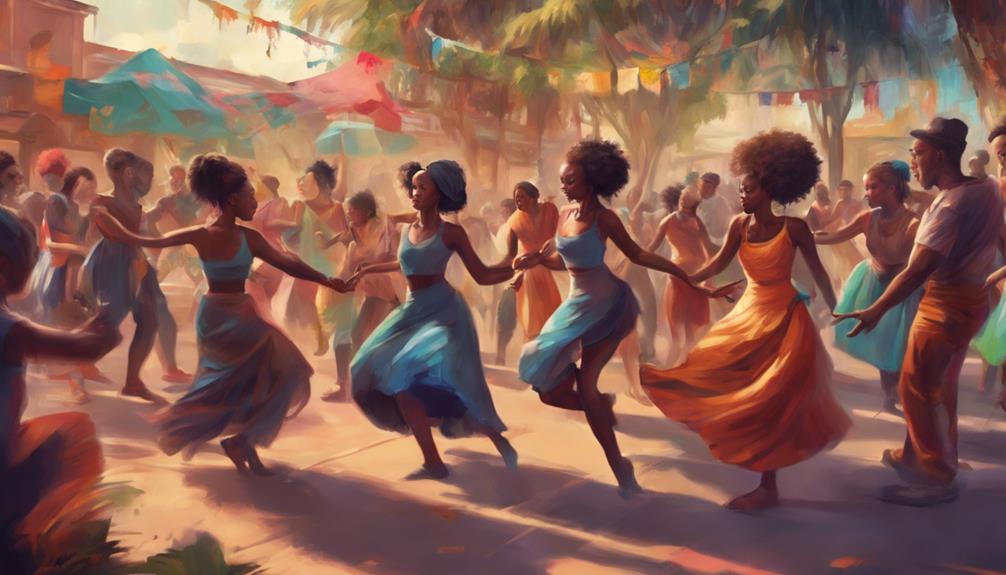Art and culture serve as essential pillars in shaping our society, influencing individual development, and fostering a sense of community. The intricate relationship between art, culture, and human experience is a multifaceted tapestry that intertwines tradition, innovation, and societal progress. By examining the intricate nuances of artistic expression and cultural heritage, we can begin to unravel the profound impact these elements have on our daily lives. As we explore the intricate interplay between art, culture, and societal norms, we uncover a world of endless possibilities and enriching experiences awaiting further exploration.
Key Takeaways
- Art and culture shape societal values and inspire social change.
- Art enhances identity formation and fosters self-discovery.
- Art contributes to human experience by promoting personal growth.
- Art serves as a catalyst for activism, challenging norms, and driving societal transformation.
Impact of Art on Society
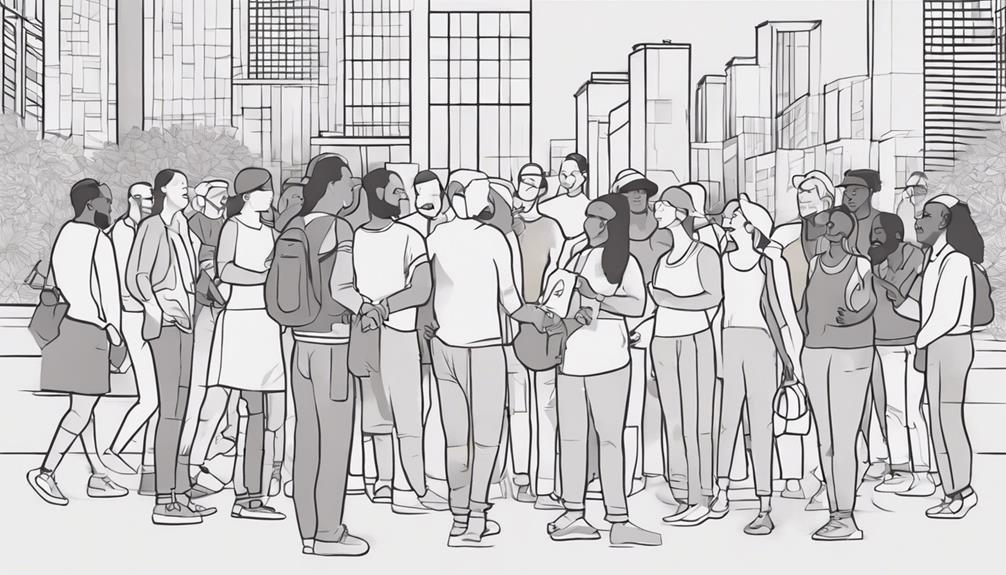
Art plays a pivotal role in society, exerting a profound influence on cultural norms and societal values. The importance of art in society cannot be overstated; it serves as a mirror reflecting the beliefs, values, and aspirations of a community. Through various art forms such as paintings, sculptures, music, and literature, society is able to express its collective identity and history. Art has the power to shape public opinion, challenge existing paradigms, and inspire social change. By providing a platform for dialogue and introspection, art promotes critical thinking and empathy among individuals, fostering a more inclusive and understanding society.
Moreover, the importance of art lies in its ability to promote unity and cohesion within communities. Shared artistic experiences create bonds among individuals, transcending cultural and social barriers. Art encourages diversity by celebrating different perspectives and narratives, enriching the fabric of society. In essence, art serves as a catalyst for societal progress, enabling individuals to connect, communicate, and collaborate towards a better future.
Influence on Identity Formation
In the realm of human development and psychology, the influence of culture and artistic expressions on identity formation has been a subject of significant scholarly inquiry. Cultural heritage and artistic endeavors play a pivotal role in shaping individuals' sense of self and belonging. Here are three key ways in which art and culture influence identity formation:
- Reflecting Values and Beliefs: Art and culture serve as mirrors that reflect an individual's values, beliefs, and traditions, providing a foundation for identity construction.
- Exploration and Understanding: Exposure to diverse art forms and cultural experiences enables individuals to explore and understand their own identity formation process, fostering self-awareness and personal growth.
- Self-Discovery and Expression: Cultural expressions in art offer a platform for self-expression, allowing individuals to delve into their inner thoughts, emotions, and experiences, thus contributing significantly to their identity development.
Through these mechanisms, art and culture not only shape but also enrich individuals' identities, fostering a deeper connection to themselves and their cultural heritage.
Art's Contribution to Human Experience
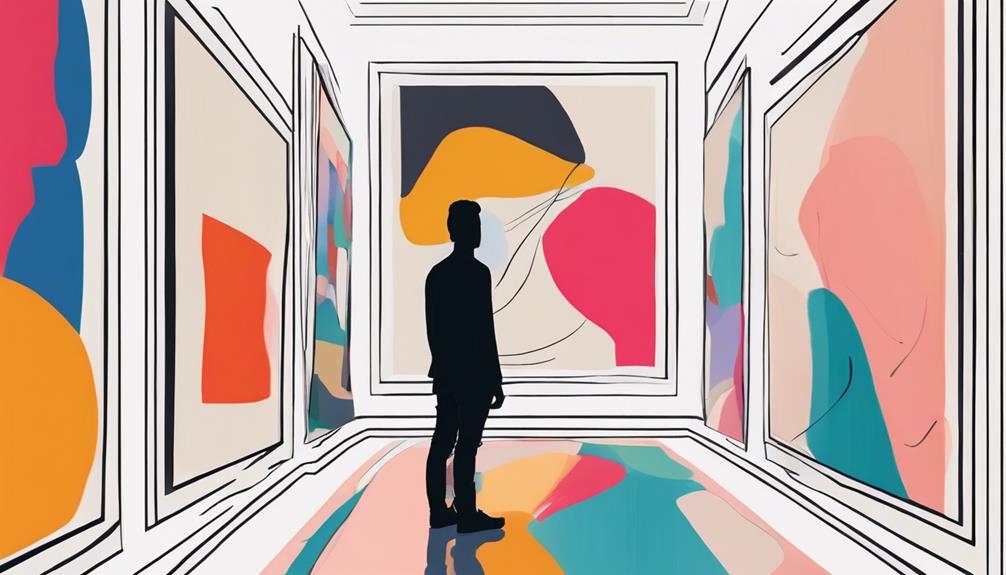
The exploration of art's impact on human experience reveals profound insights into the interconnectedness of cultural expressions and individual identity formation. Fine art serves as a conduit for individuals to convey their innermost emotions, thoughts, and experiences in a creative and expressive manner. By engaging with cultural artifacts and artistic expressions, individuals gain a deeper understanding of the beliefs, values, and traditions that shape different societies. Through the lens of fine art, complex themes, histories, and perspectives are made tangible, allowing for a more profound exploration and comprehension of diverse human experiences.
Moreover, art plays a crucial role in fostering connections, promoting empathy, and shaping personal identity. The appreciation and creation of fine art contribute significantly to personal growth, cognitive development, and emotional well-being within society. By delving into the world of art, individuals not only enrich their own experiences but also contribute to the collective tapestry of human culture and expression.
Shaping Collective Consciousness
Cultural expressions and artistic manifestations intricately influence the collective consciousness by embodying societal values, beliefs, and traditions. When it comes to shaping collective consciousness, Modern Art plays a significant role in challenging perceptions, sparking dialogue, and fostering cultural evolution. Here are three key ways Modern Art influences our collective consciousness:
- Provoking Thought: Modern Art often pushes boundaries, questions norms, and challenges traditional perspectives, prompting viewers to reflect on societal issues and contemplate new ideas.
- Inspiring Change: Through innovative forms, techniques, and subject matters, Modern Art has the power to inspire social and cultural transformation, encouraging individuals to reconsider their beliefs and values.
- Connecting Diverse Communities: Modern Art serves as a universal language that transcends cultural barriers, bringing people together from different backgrounds to appreciate creativity and engage in meaningful conversations about shared experiences and emotions.
In essence, Modern Art acts as a dynamic force in shaping collective consciousness by stimulating critical thinking, promoting change, and fostering unity among diverse populations.
Cultural Reflection and Representation
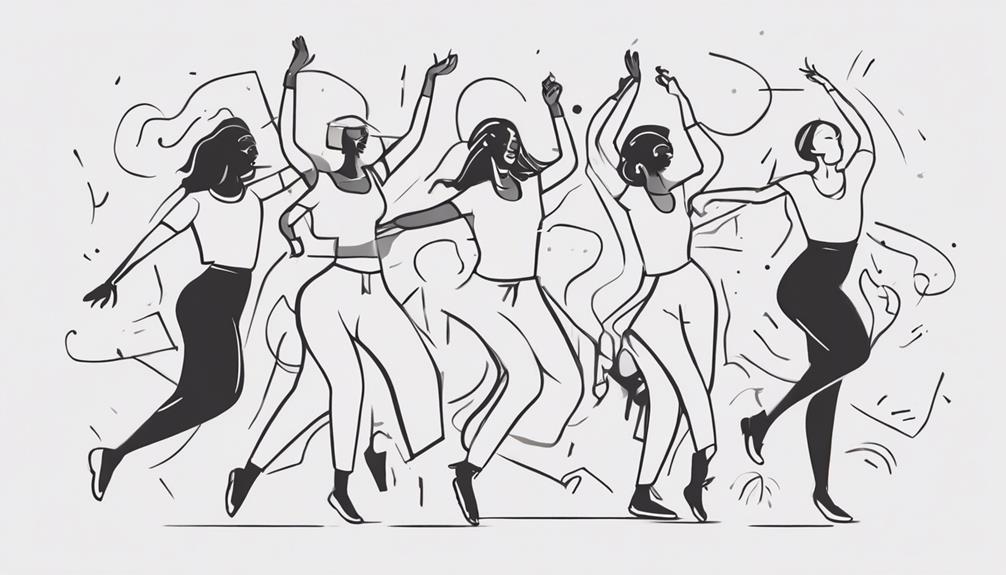
Artistic expression within a culture serves as a mirror reflecting the values and beliefs ingrained within a society. The diverse array of cultural arts showcases the richness and complexity of human experiences, offering a platform for storytelling and representation. Through these artistic manifestations, communities can share their heritage, traditions, and unique perspectives with the world.
Artistic Expression in Culture
Within the fabric of society, the nuanced interplay between artistic expression and cultural identity intricately weaves a tapestry that reflects the essence of humanity. Artistic expression in culture, especially in the context of American art, carries significant importance:
- Reflection of Societal Values: American art reflects the values, beliefs, and traditions prevalent in society, providing a mirror to the cultural landscape.
- Insights into Diversity: Cultural representation through art offers insights into the diverse and rich tapestry of American communities, showcasing their uniqueness and vibrancy.
- Preservation of Heritage: Artistic expressions in culture play a crucial role in preserving and transmitting American heritage, history, and identity across successive generations.
Diversity in Cultural Arts
The diverse array of cultural arts serves as a multifaceted mirror reflecting the intricate tapestry of human experiences and identities across societies worldwide. In a melting pot like New York City, cultural arts play a crucial role in showcasing the richness and diversity of traditions, beliefs, and values held by different communities. Through various art forms such as music, dance, visual arts, and theater, individuals in New York City and beyond can explore and appreciate the customs and practices of a wide range of societies. This exposure not only fosters a deeper understanding of different cultures but also serves as a bridge that connects people from diverse backgrounds, promoting mutual respect and unity in a globalized world.
Art as a Tool for Social Change
Art has proven to be a powerful catalyst for social change, inspiring activism and challenging societal norms. Through various artistic expressions such as music, literature, and visual arts, cultural movements have been ignited, sparking conversations and driving progress. Artists play a unique role in advocating for marginalized communities and promoting inclusivity through their creative endeavors.
Art Inspires Activism
Utilizing their creative prowess, artists have long served as catalysts for societal transformation, igniting activism and fostering awareness of critical issues. Art inspires activism through various means:
- Challenging Norms: Artists use their work to challenge established societal norms, prompting viewers to question the status quo and advocate for change.
- Empowering Marginalized Voices: Art provides a platform for marginalized communities to express their experiences, empowering them to speak out against injustice and inequality.
- Mobilizing Communities: Through visual storytelling and symbolic imagery, art mobilizes communities, sparking dialogue, and collective action on pressing social issues.
Artistic movements like street art, protest art, and performance art have been pivotal in driving social and political change by inspiring activism and amplifying voices that strive for a more just society.
Cultural Expression Sparks Change
Cultural expression, as exemplified through artistic endeavors, has consistently served as a formidable catalyst for instigating societal transformation and advocating for critical change. Through cultural expression, art becomes a powerful tool for challenging existing norms, sparking conversations, and driving social progress. History showcases how movements like the Civil Rights Movement leveraged art to amplify voices and push for equality. Artists play a crucial role in raising awareness about pressing social issues, fostering empathy, and uniting communities towards a common cause. By providing a platform for marginalized groups to share their narratives and experiences, cultural expression through art empowers individuals and fosters solidarity. Ultimately, art inspires action, encourages dialogue, and paves the way for meaningful societal change.
Creativity Challenges Societal Norms
In challenging societal norms, the creative expression of individuals serves as a potent force for driving social change and fostering critical conversations within communities. Artists use their work to address important social issues, provoke thought, and inspire action in communities. Creative initiatives like street art, performance art, and public installations challenge the status quo and promote dialogue on pressing societal issues. Artistic movements such as protest art, feminist art, and environmental art push boundaries and advocate for change in society. Through these endeavors, artists engage with audiences, raise awareness, and advocate for a more inclusive and just world. Art has the unique ability to challenge the existing norms, provoke introspection, and catalyze transformative societal shifts.
Artistic Expression and Emotional Connection
Artistic expression plays a crucial role in facilitating profound emotional connections within individuals and between diverse communities. Through art, individuals can convey intricate emotions and experiences that words often fail to capture. This form of expression enables people to establish deep emotional bonds with themselves, others, and the world at large. Moreover, art serves as a therapeutic outlet, allowing individuals to process and manage their feelings in a creative and productive manner. By delving into their inner worlds and sharing their unique perspectives through art, individuals can cultivate empathy and mutual understanding among different societal groups.
Emotional connections forged through artistic expression transcend cultural and linguistic boundaries, creating a universal language that resonates with individuals on a profound level. This shared emotional experience fosters a sense of unity and interconnectedness among people from various backgrounds, fostering a more cohesive and empathetic society. In essence, art serves as a powerful tool for promoting emotional awareness, empathy, and social cohesion in both individuals and communities.
Preserving Heritage and Tradition
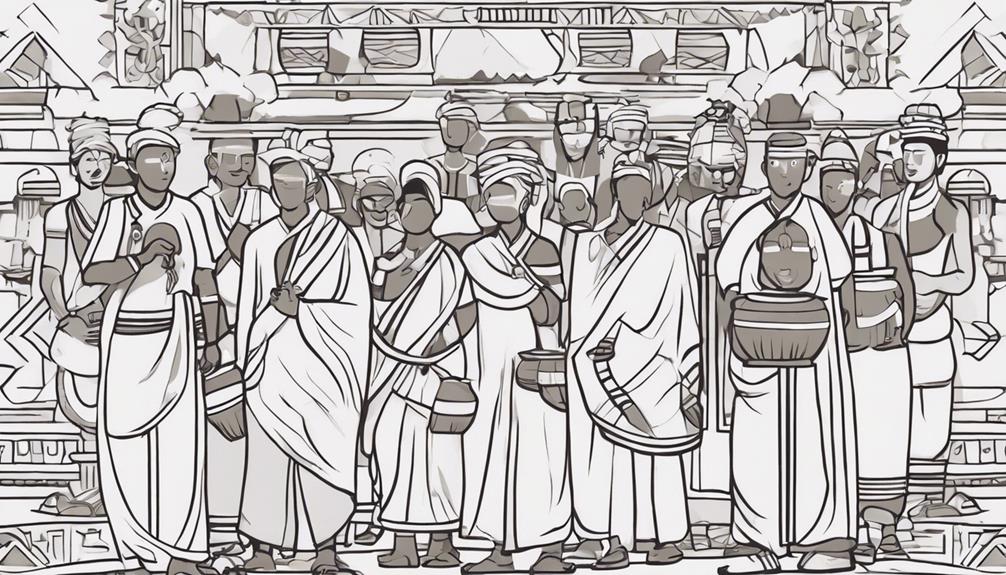
The preservation of heritage and tradition is paramount in ensuring the continuity and relevance of cultural practices and beliefs across generations. This task is accomplished through various means:
- Cultural Artifacts: Objects such as pottery, clothing, or tools hold historical significance and provide insights into the daily lives and customs of past societies.
- Rituals and Festivals: Celebratory events and ceremonies serve as important markers of tradition, reinforcing community bonds and passing down values from one generation to the next.
- Artistic Expressions: Paintings, sculptures, music, and dance not only reflect cultural heritage but also serve as mediums for storytelling, preserving myths, legends, and historical events.
Frequently Asked Questions
What Is the Role of Art and Culture in Your Life?
In my life, art and culture serve as vital elements that enable personal expression. Through various art forms and cultural experiences, I can articulate my thoughts, emotions, and unique perspectives. This process allows for a deeper understanding of myself and fosters a sense of authenticity and connection with others. Art and culture, therefore, play a significant role in shaping my identity and facilitating meaningful interactions within my community.
What Is the Role and Importance of Art in Our Daily Lives?
Art therapy, a powerful tool in mental health treatment, harnesses the healing potential of artistic expression to promote emotional well-being. Through creative processes, individuals explore their feelings, confront challenges, and cultivate self-awareness. This therapeutic approach not only enhances emotional resilience but also fosters personal growth and self-discovery. By integrating art into daily routines, individuals can tap into the transformative power of creativity to navigate life's complexities and nurture their mental health.
What Is the Most Important Function of Art in People's Lives Society and Culture?
Art integration in society serves as a catalyst for fostering creativity, promoting cultural diversity, and enhancing social cohesion. By transcending language barriers, art acts as a universal language, enabling individuals to connect and communicate across boundaries. Through its ability to evoke emotions and provoke thought, art plays a vital role in shaping societal norms, values, and identities. Ultimately, art integration in people's lives, society, and culture facilitates understanding, empathy, and personal growth.
Why Is Art and Culture Important in a Community?
Art and culture are vital components of a community's fabric due to their ability to foster community engagement. They provide a platform for individuals to connect, share experiences, and celebrate diversity. Through art and cultural activities, communities can promote social cohesion, understanding, and a sense of belonging. By participating in these creative expressions, individuals can strengthen relationships, build empathy, and contribute to the overall well-being of the community.
Conclusion
In conclusion, the role of art and culture in our lives is multifaceted and essential. Through their impact on society, influence on identity formation, contribution to human experience, shaping of collective consciousness, reflection of culture, and promotion of social change, art and culture play a vital role in fostering creativity and critical thinking skills, promoting social cohesion, preserving heritage, and creating emotional connections. Their significance in enriching our lives cannot be overstated.
